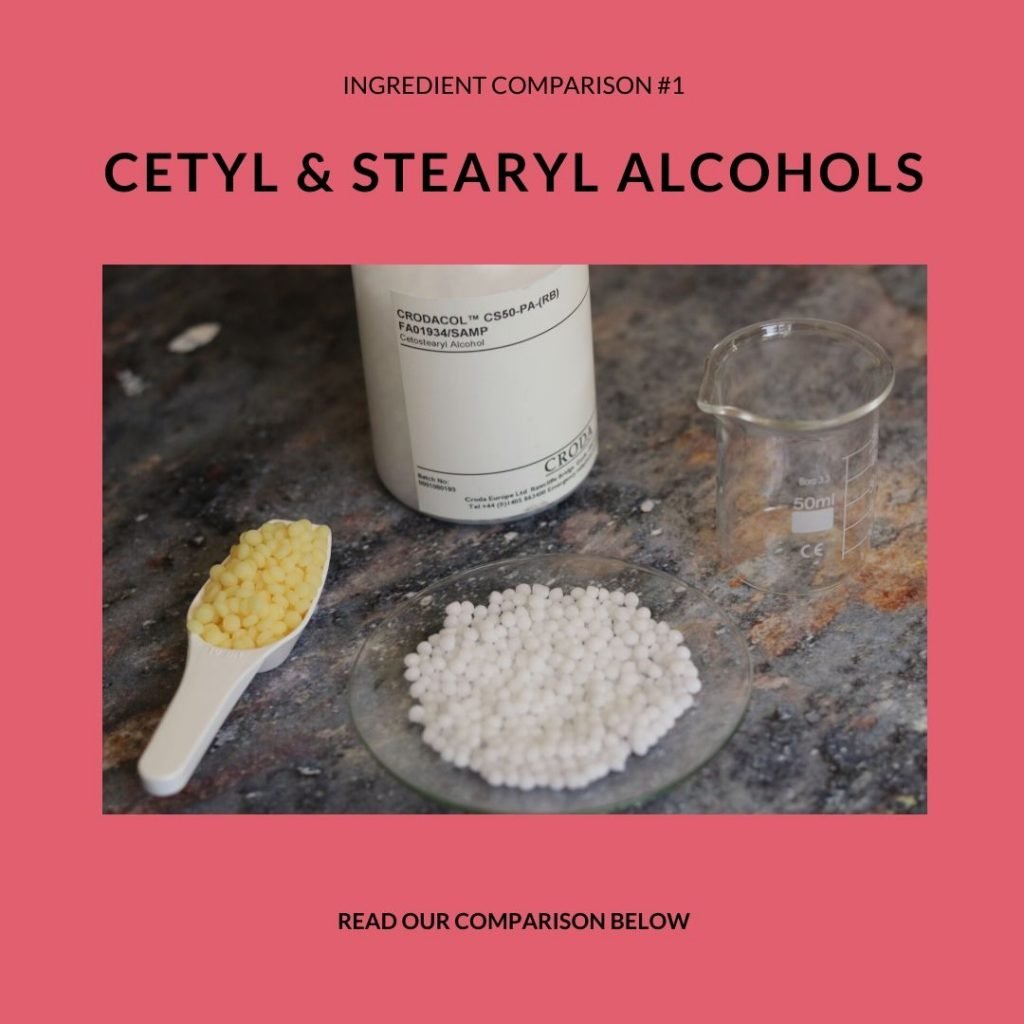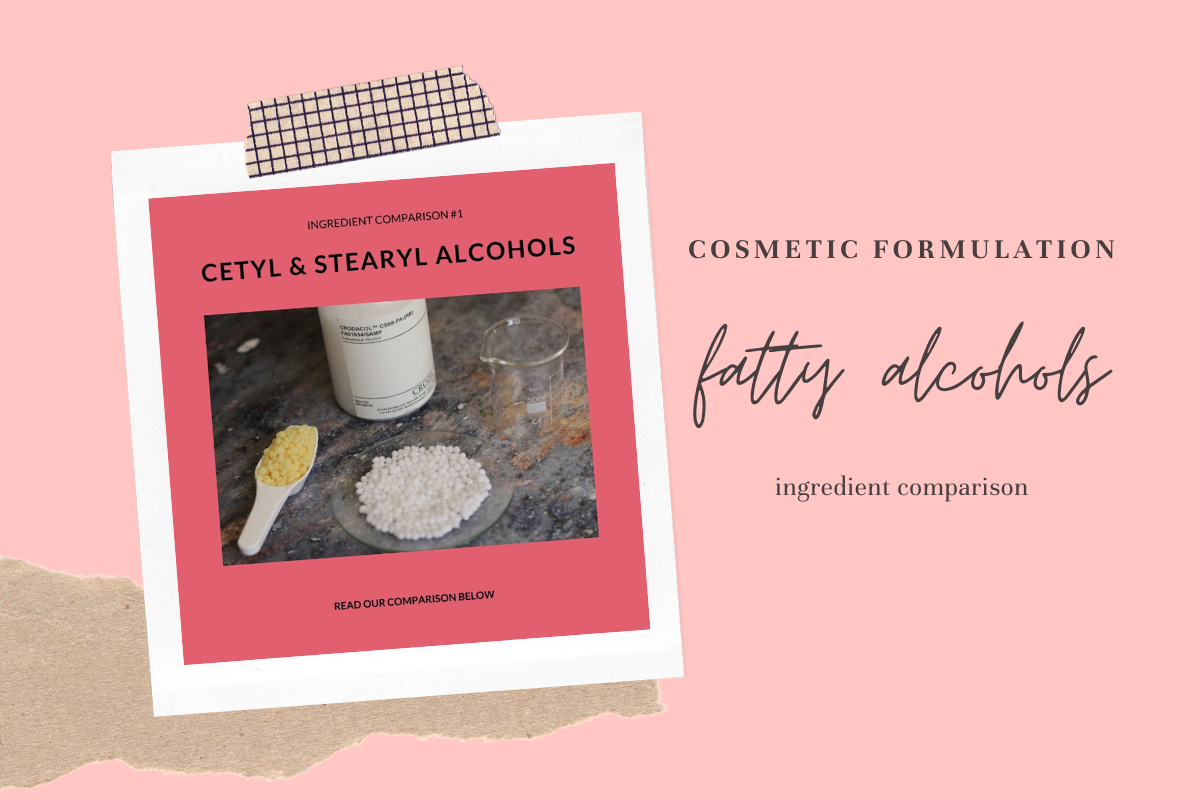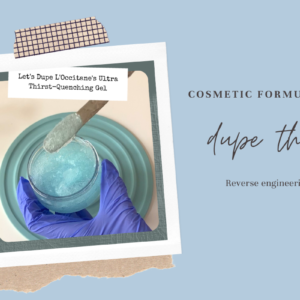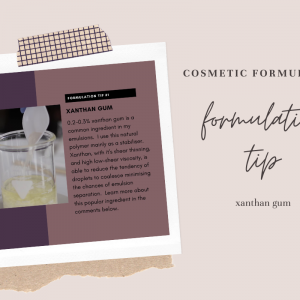
Want to make your emulsion thicker, more creamy and stable? Just add 1-2% of either:
cetyl alcohol (cetanol (1-hexadecanol C16));
stearyl alcohol (1-octadecanol C18); or
cetostearyl alcohol (blend of C16 and C18).
I’m a huge fan of these common higher alcohols. I use them in many product types including emulsions, hair conditioners, anhydrous balms/sticks. They are inexpensive, widely available, “natural” and provide emolliency, viscosity build and stability.
Let’s dig a little deeper….
Cetyl alcohol melts at 49.3°C and stearyl alcohol at 58°C. Many formulators like to use a combination of both. Making the alkyl distribution wider, by mixing the different chain lengths (C16 and C18) results in a more robust formulation, ability to cope with a wider range of temperatures, improved stability and a better lamellar gel network. You can buy a combination of C18 and C16 in a pre-made blend called, cetostearyl alcohol (commonly known as cetearyl alcohol) in ratios of: 30:70, 70:30 or 50:50. I like Croda’s Crodacol CS50 which is a 50:50 blend, has low odor and is purported to be less grainy than standard cetearyl alcohol blends.
Some notable differences:
Stearyl alcohol produces a whiter and more opaque product due to it’s longer carbon chain length. Cetyl alcohol breaks more easily when applied so gives a quicker spread and can hold onto more water than stearyl alcohol as it is more hydrophilic. This results in a higher gel phase which means a higher viscosity. However stearyl alcohol has a different crystalline structure and is less polar resulting in a a more stable viscosity, unlike cetyl alcohol whose viscosity can increase over time.
Do you use fatty alcohols in your formulas? What is your experience of them?





Hi!, when I use only Cetyl alcohol the emulsion is either too liquid or too hard (high viscosity).
Will ceterayl help me to find a more balance-stable viscosity?
Even a change of just 0.5% will make a difference so you will need to be careful with how much you add. Add more for more viscosity and less if you would like the emulsion to be thinner. Cetearyl alcohol contains stearyl alcohol which is similar to cetyl alcohol so you may not see a perceptable change in terms of viscosity.
Hi I make my own shampoo and conditioner vegan please I need a great thickener an a preservative I also use aloe Vera as a basing instead of water which products would be great for me?
Please join our surfactant group – link to join is on this page https://makingskincare.com/surfactant-calculator/ and go through the pinned post and for preservative choices see our review page on this website – see our main menu for the job. Aloe is hard to preserve.
Can I use only cetearyl alcohol in formulating lotions? Or must I combine with another emulsifier? And if I need to, which is the most ideal
Cetearyl alcohol isn’t really an emulsifier so yes you should include 2 emulsifiers or a combo eg lotionpro, ceteareth-20 or emulsan paired with glyceryl stearate citrate. Do check out our tutorial, calculator and articles on this.
Hi there I have a wonder cream formulation that turns out great at 200 g but when I try to double it, it doesn’t emulsify. Any ideas of why this is happening?
Hi Maria, do go through the steps here to fix the issue – https://makingskincare.com/emulsions-stability/
Hi!
What will give me more stable balm that don’t melts in high temperature. Cetyl alcohol or cetearyl alcohol. Thanks
Keep the cetyl/cetearyl alcohol and remove 5-7% of the liquid oil and replace with behenyl alcohol. We don’t know your formula so it’s hard to be specific but if it still melts then deduct more liquid oil and add a wax.